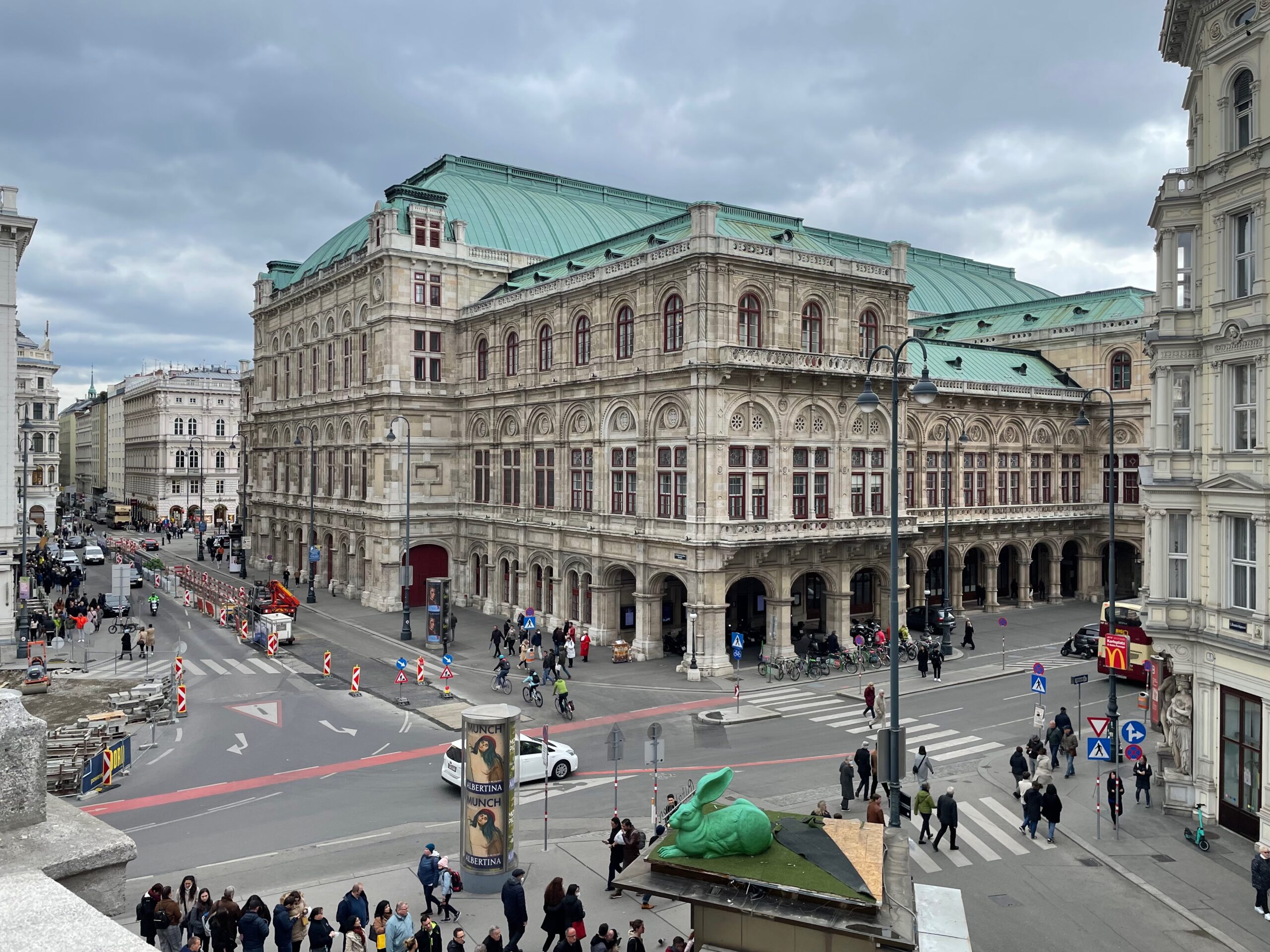When did I last visit Vienna? April 2022
When was this article last updated? February 2025
.
Arriving in Vienna
The quickest and most convenient way to get into the centre of Vienna from the Airport is by train. There are three options, the City Airport Train (CAT), the S-Bahn local trains and the RailJet trains operated by the national Austrian railway company.
The City Airport Train (CAT) runs every 30 minutes, costs €14,90 for a one-way ticket and takes 16 minutes to the city, whilst the S-Bahn runs every 30 minutes (more often during commuter times) costs €4,10 and takes 25 minutes. The Austrian RailJet service also stops at Vienna Airport, takes 15 minutes to get to the city and offers quick connections to other parts of Austria.
A quick tip from me – I personally would take the S-Bahn or Railjet over the CAT. You will notice on arrival that the CAT is signposted much better than regular trains, however, it is three times more expensive than the S-Bahn and only saves you a few minutes.
Vienna Airport Lines operate local buses to the outskirts of Vienna in around 20 minutes or the centre of Vienna in 40 minutes. Their services connect to Vienna S-Bahn lines.
Coaches are available to destinations across Austria, Slovakia and Germany. The most popular services is Flixbus or Slovak Lines’ services towards Bratislava in Slovakia.
Taxis can be found outside the arrival halls at Vienna Airport’s terminals and Uber is also available at the airport. A taxi to the centre of Vienna will cost 40 Euros (prices do vary by company and can be very expensive at night) and an Uber will cost 35-40 Euros for the same journey.
All major rental car providers are present at Vienna Airport. If you are staying in the centre of Vienna, there is no need for a rental car, unless you are exploring other parts of Austria or want flexibility on a trip to neighbouring Slovakia.
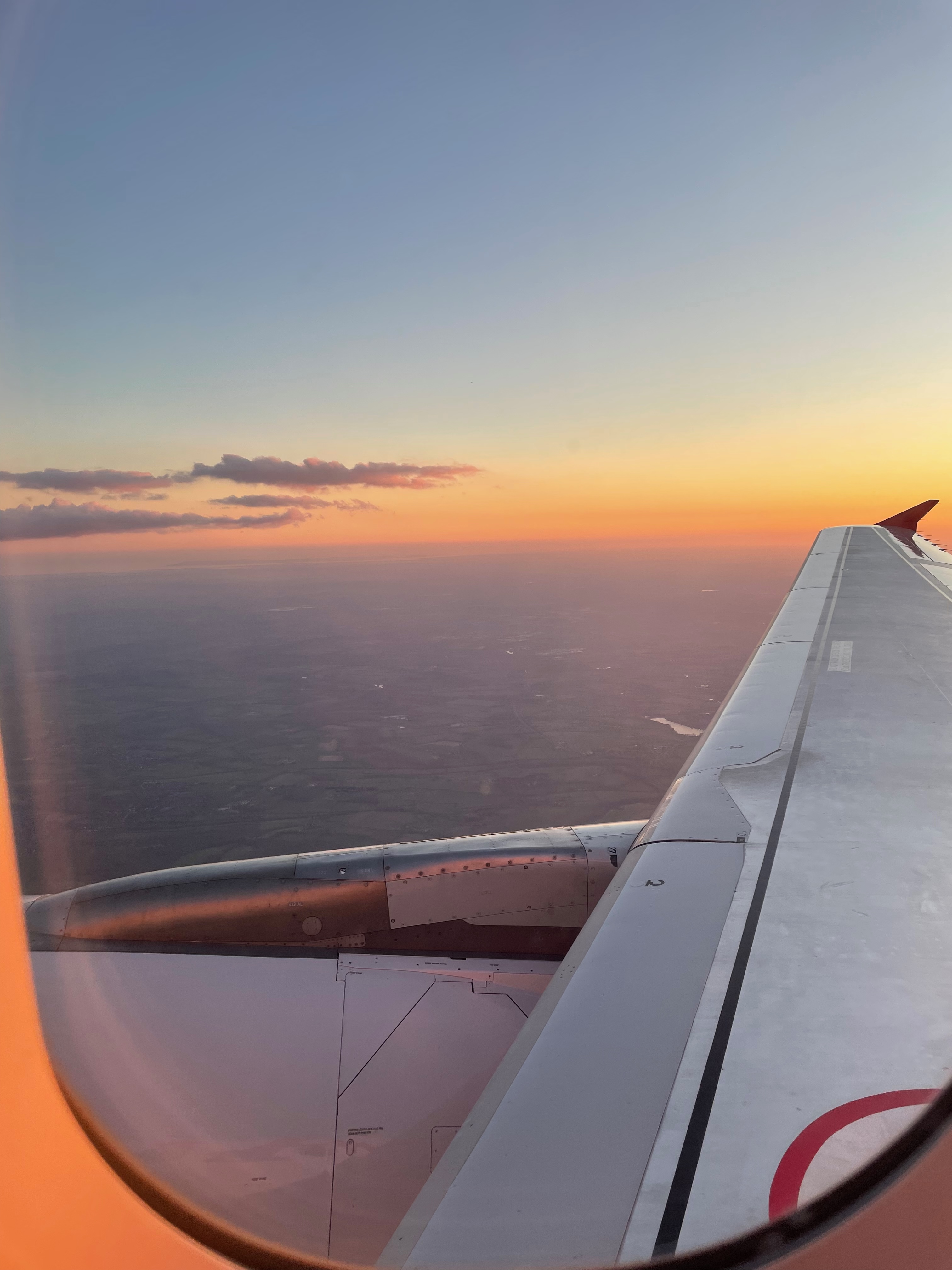
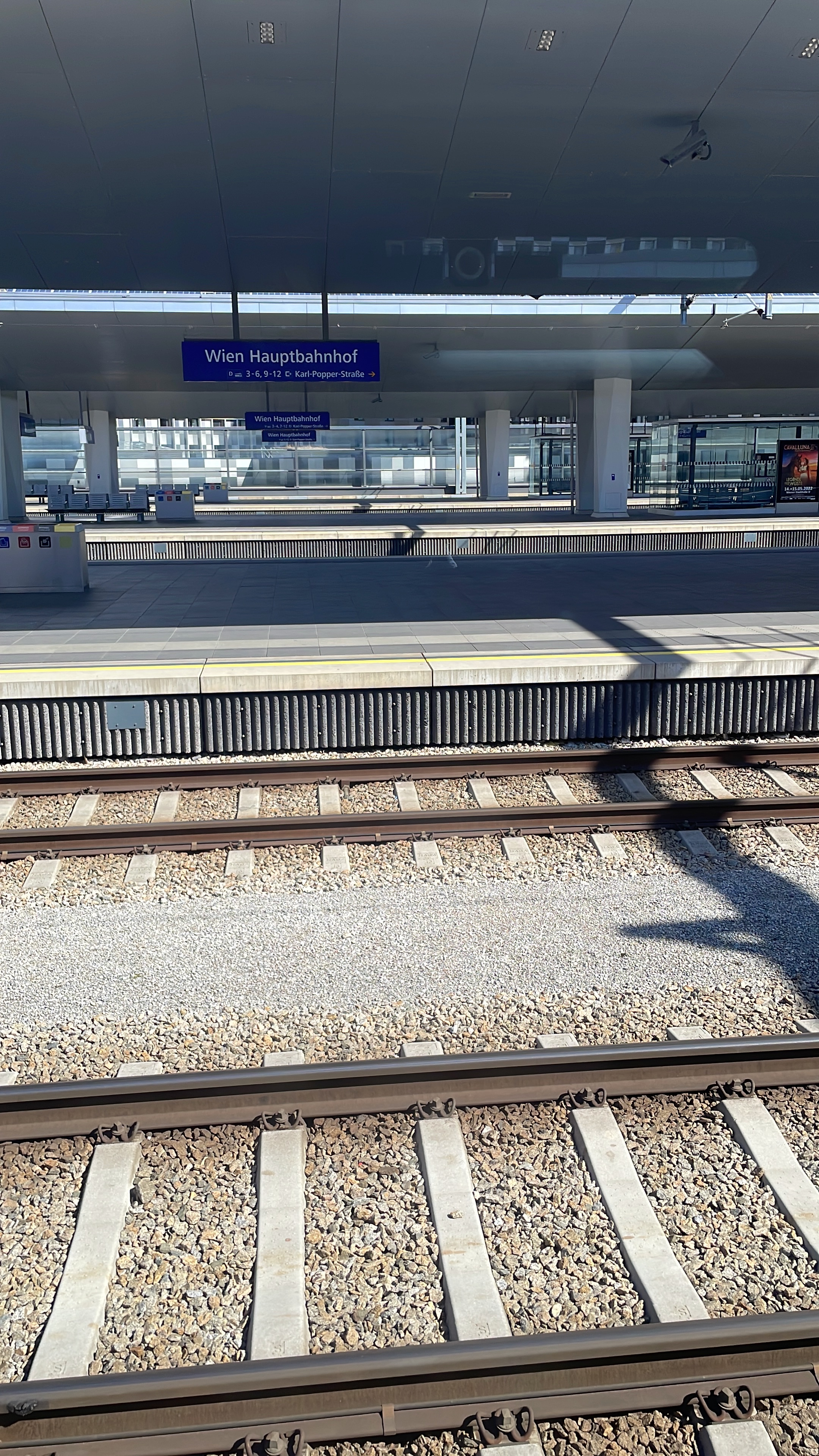
Getting around Vienna
Vienna has an efficient and useful underground system with its S-Bahn and U-Bahn. You can get almost everywhere in the city on the train, with stations only a few minutes from all major tourist attractions. Tickets are affordable with a single journey at €2,40 and a day ticket at €8 (on the ‘Wiener Linien’ app, you can get a day ticket for €5,80). Public transport is included in the Vienna City Card. Buses are also available in Vienna, although it’s unlikely that you’ll need to use them as the underground trains are so good!
If you are arriving into the city earlier in the day or late at night, taxis are often the best way to get around. Bear in mind that taxis can be expensive and that you should agree a price before starting a ride.
The city centre and inner ring of Vienna is walkable with attractions such as St Stephen’s Cathedral and the Albertina close to each other. The streets are often very busy particularly during the summer.
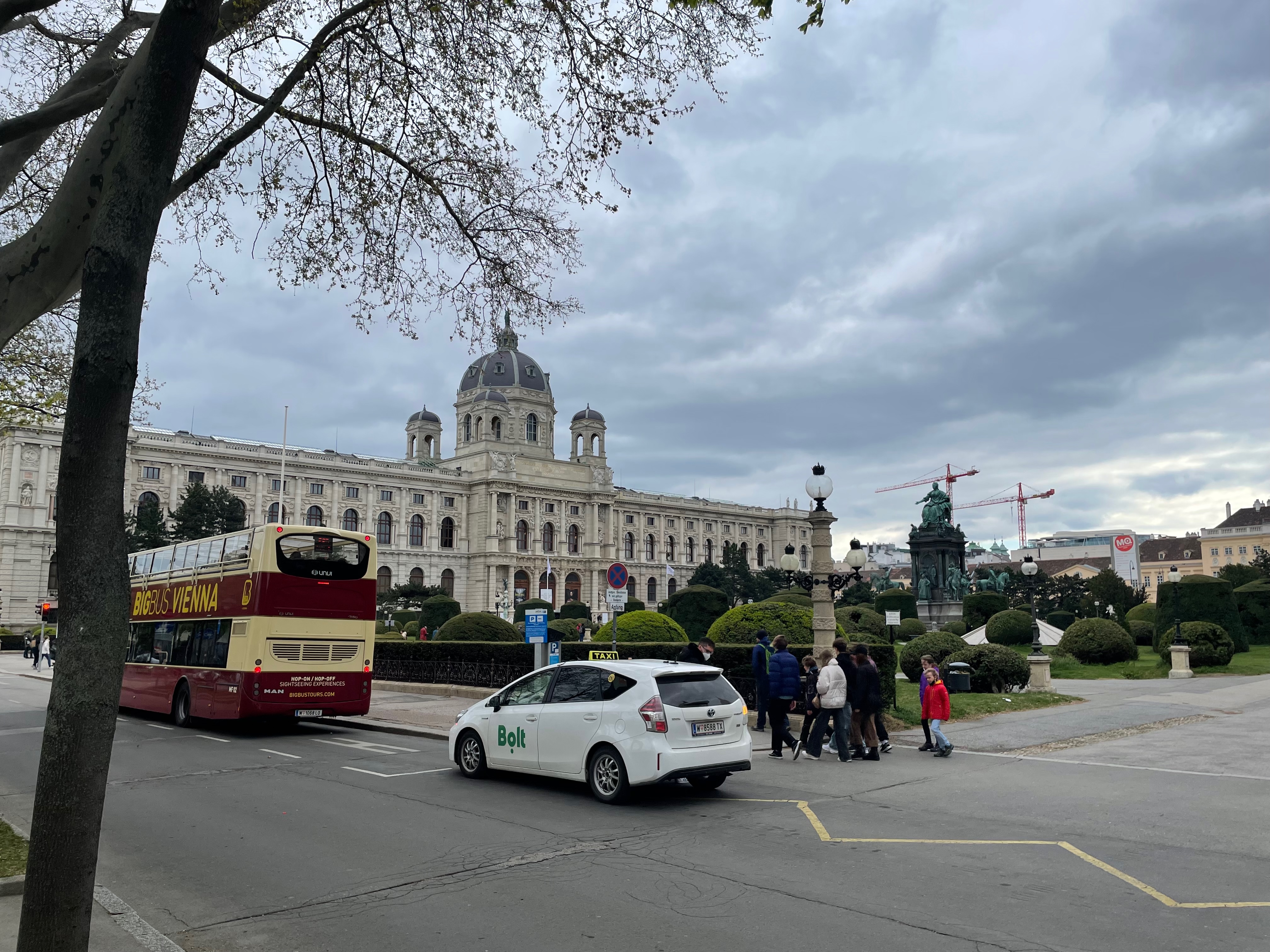
Things to do in and around Vienna
St Stephen’s Cathedral is a must visit for any tourist in Vienna. Located at the heart of the city, the Cathedral dominates in its surroundings, which are full of tourists from across the world. Going into the Cathedral is free and you can have a good look around the architecture of the building. Outside the Cathedral is a large pedestrianised area which is always busy whatever the time of day.
I would recommend climbing the South Tower for a small charge. The view of Vienna and the roof of the Cathedral from the top is well worth the over 300 steps that you have to climb to see it! Don’t worry, there is a seat at the top for you to catch your breath. Other activities, such as a tour of the Catacombs, are also available.
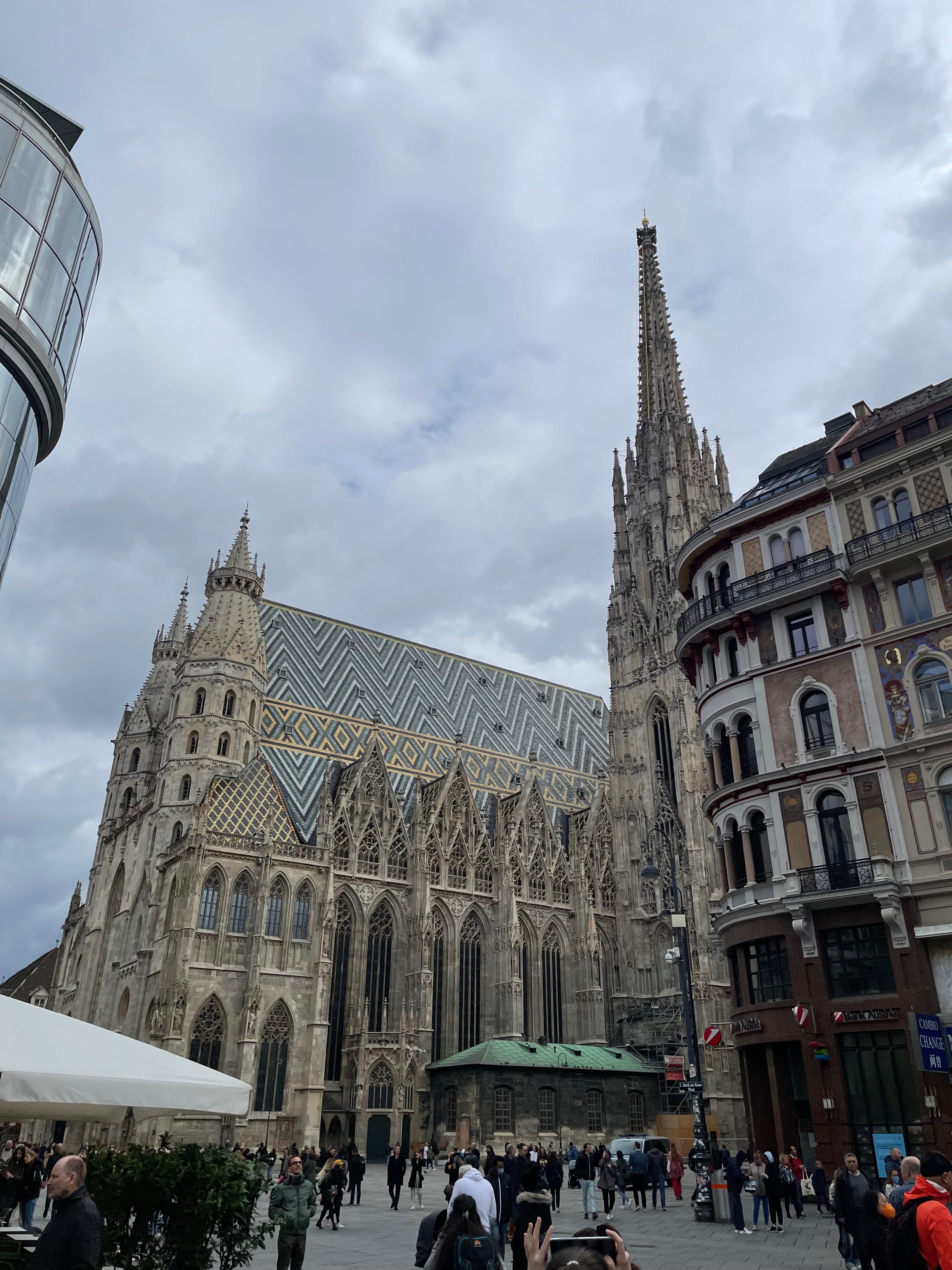
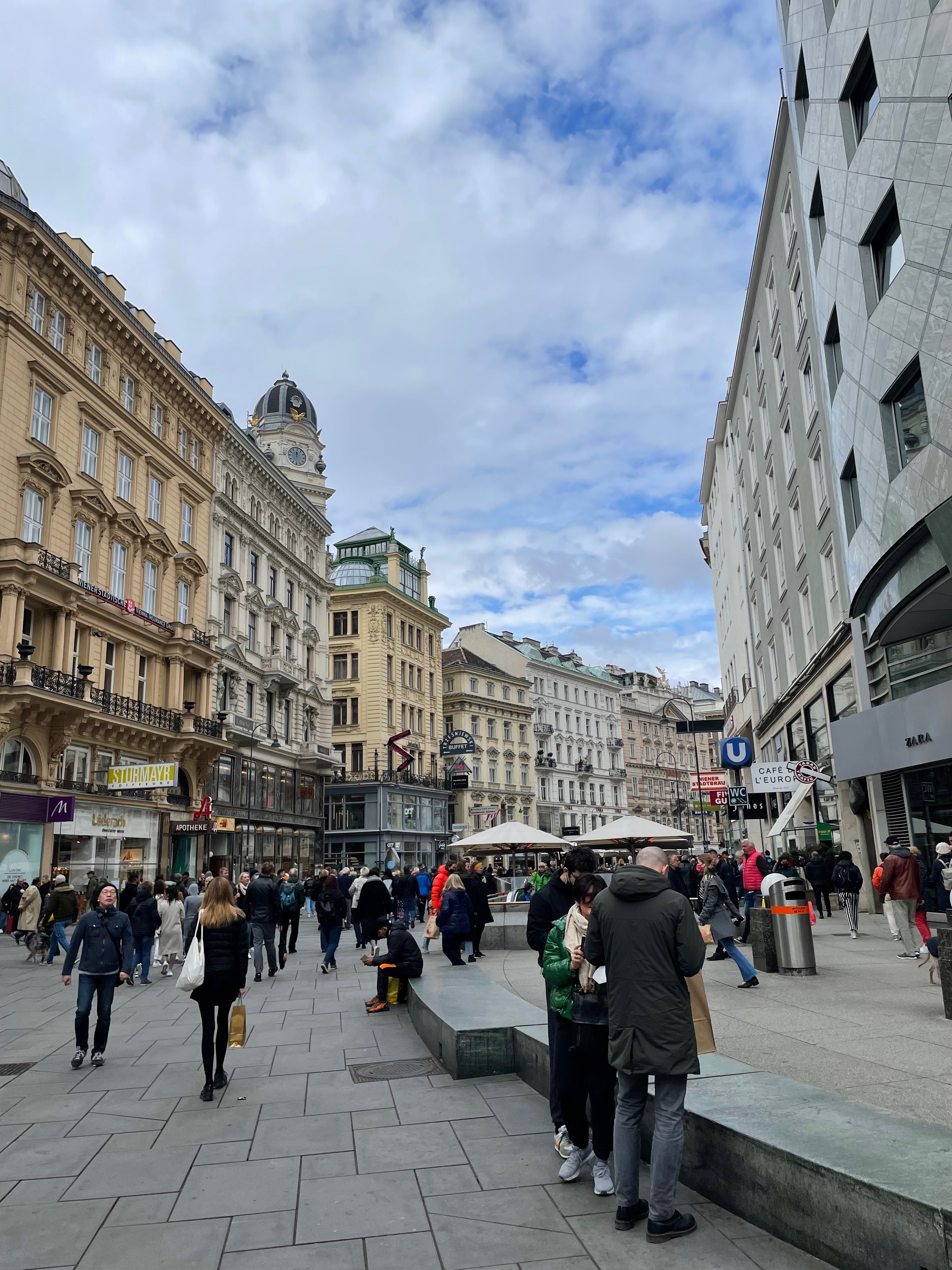
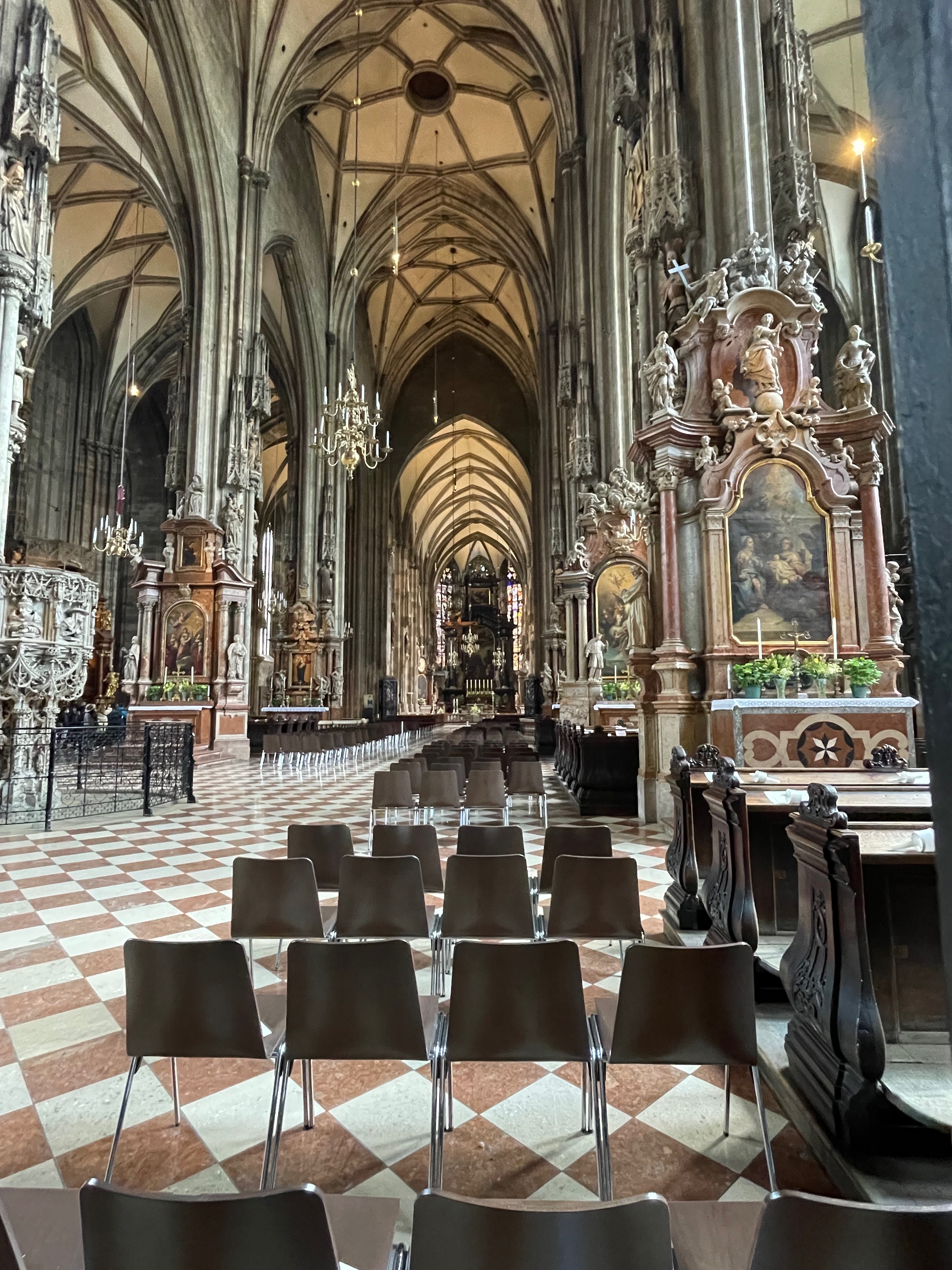
The other must visit attraction in Vienna is the Schönbrunn Palace. Even if you don’t want to pay to go inside, make sure to take a wonder around the palace grounds, the gardens and up to the top of the hill at the back. If you want to go inside, there are a range of guided tours on offer as well as access to the State Apartments. Tours are roughly 30 Euros per person. I would definitely recommend booking online in advance as the Palace can get very busy!
At certain times of year including Easter, Christmas and New Year, there are markets out the front of the Palace which adds to the offer that Schönbrunn has to offer!
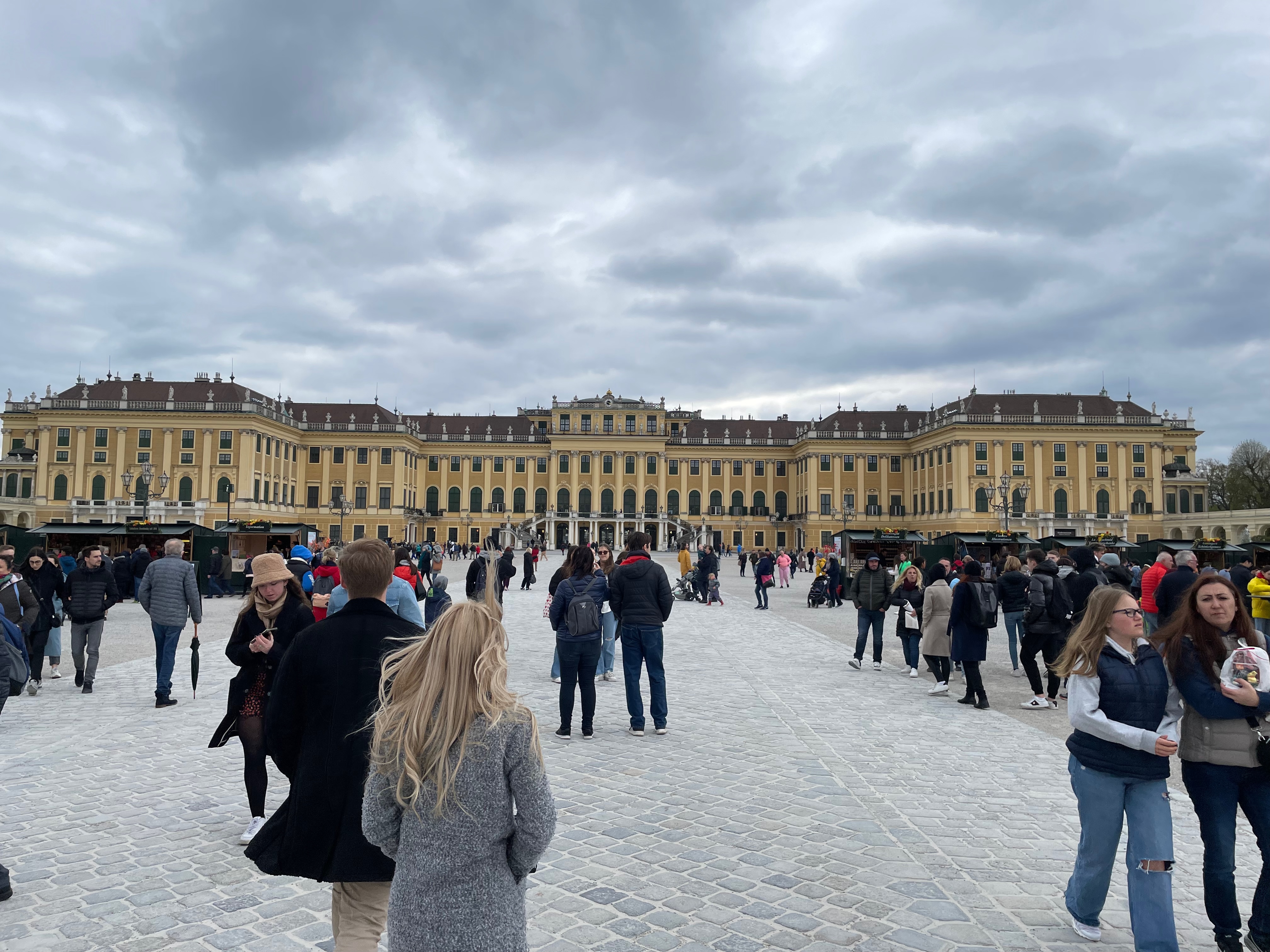
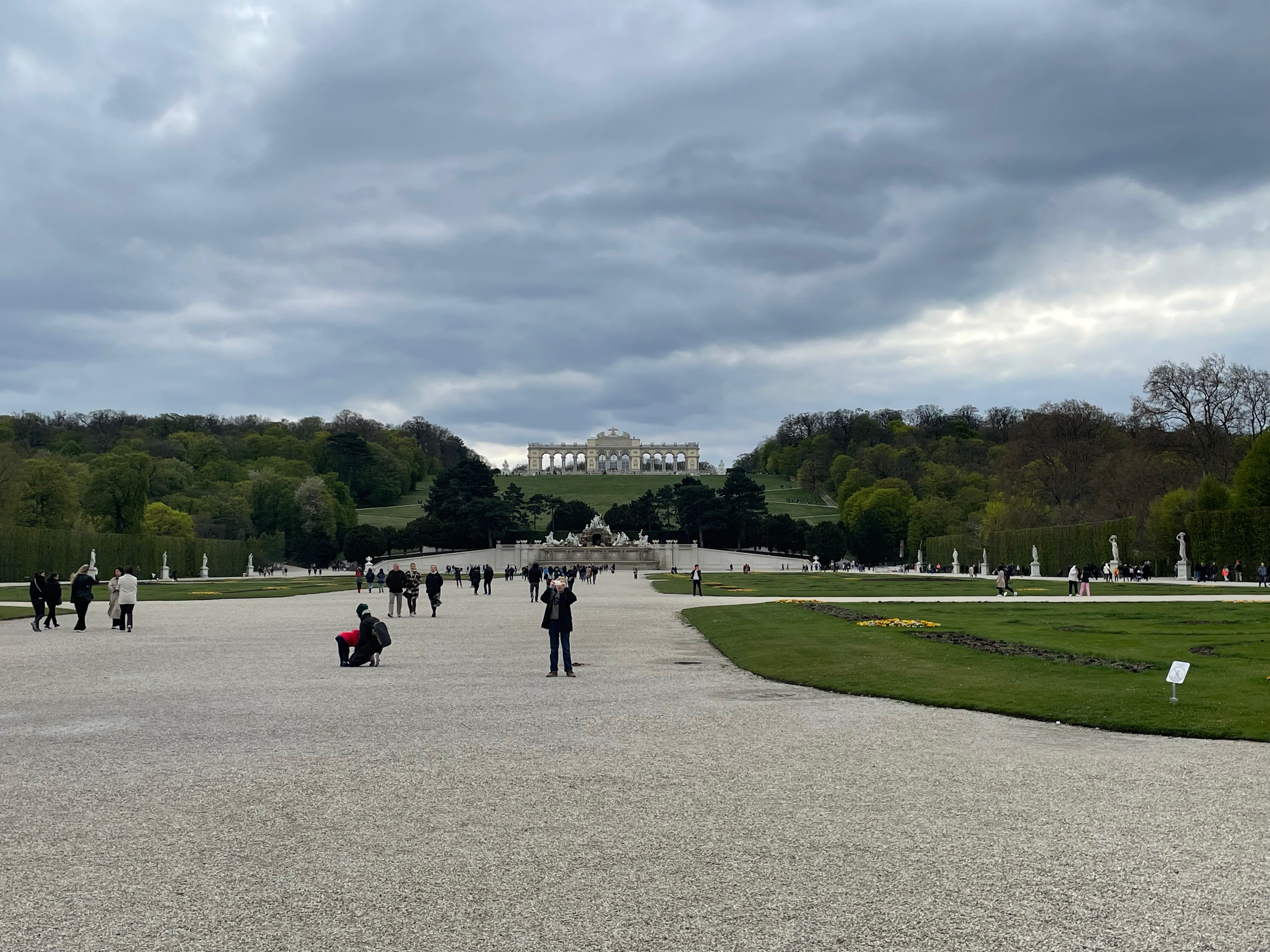
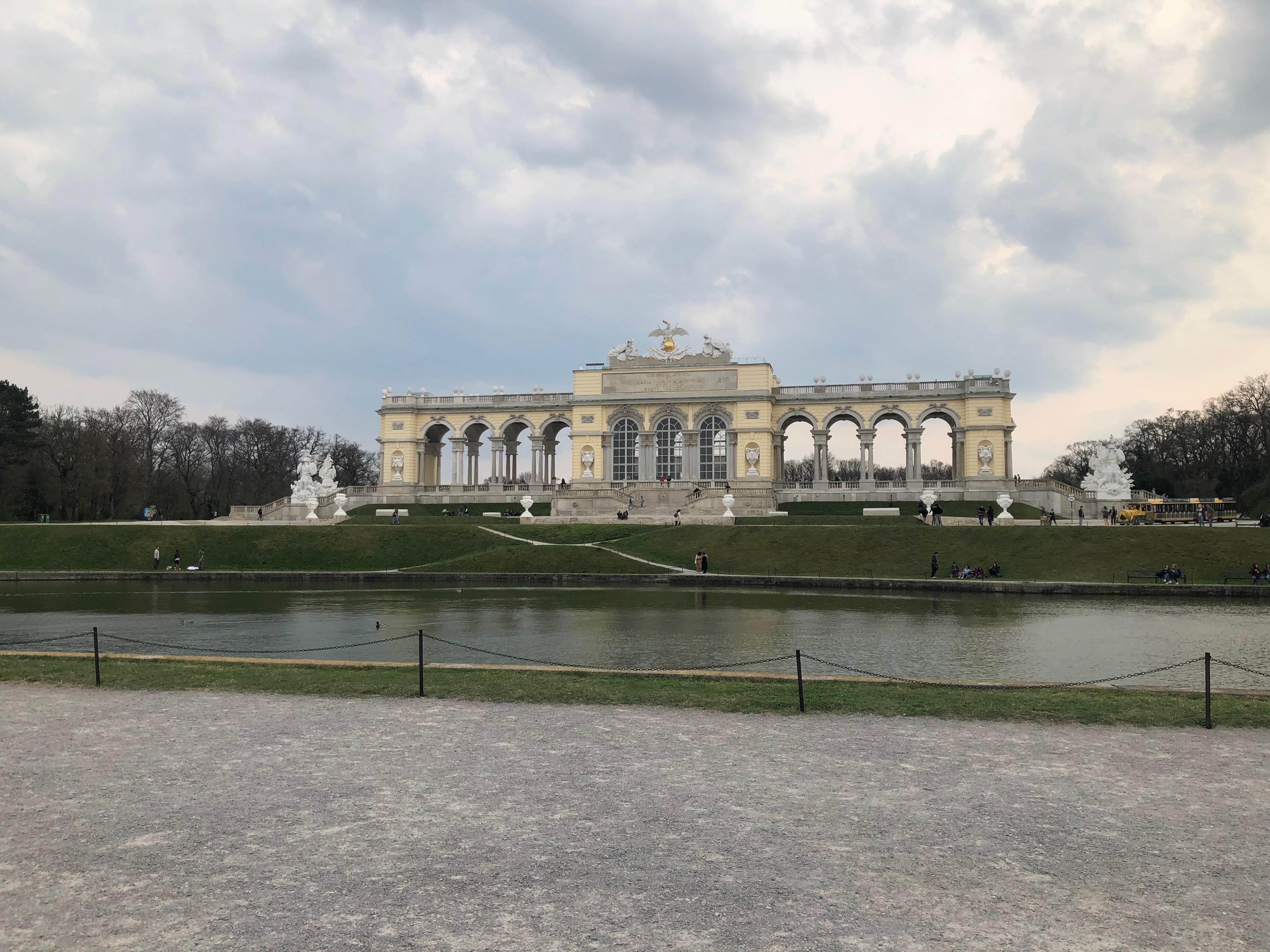
Prater is a large amusement park located to the east of the historic centre of Vienna. There is no charge to enter the park, it has a pay-as-you-ride system which means you can choose if you want to go on the rides or just have a look around this historic amusement park. The park is easy to get to from the S-Bahn station Praterstern just a few minutes walk away.
The Wiener Riesenrad is the most famous attraction at the Prater, dating back to 1897, offering views across the city of Vienna and beyond. It is 14 Euros and 50 Cents well spent!

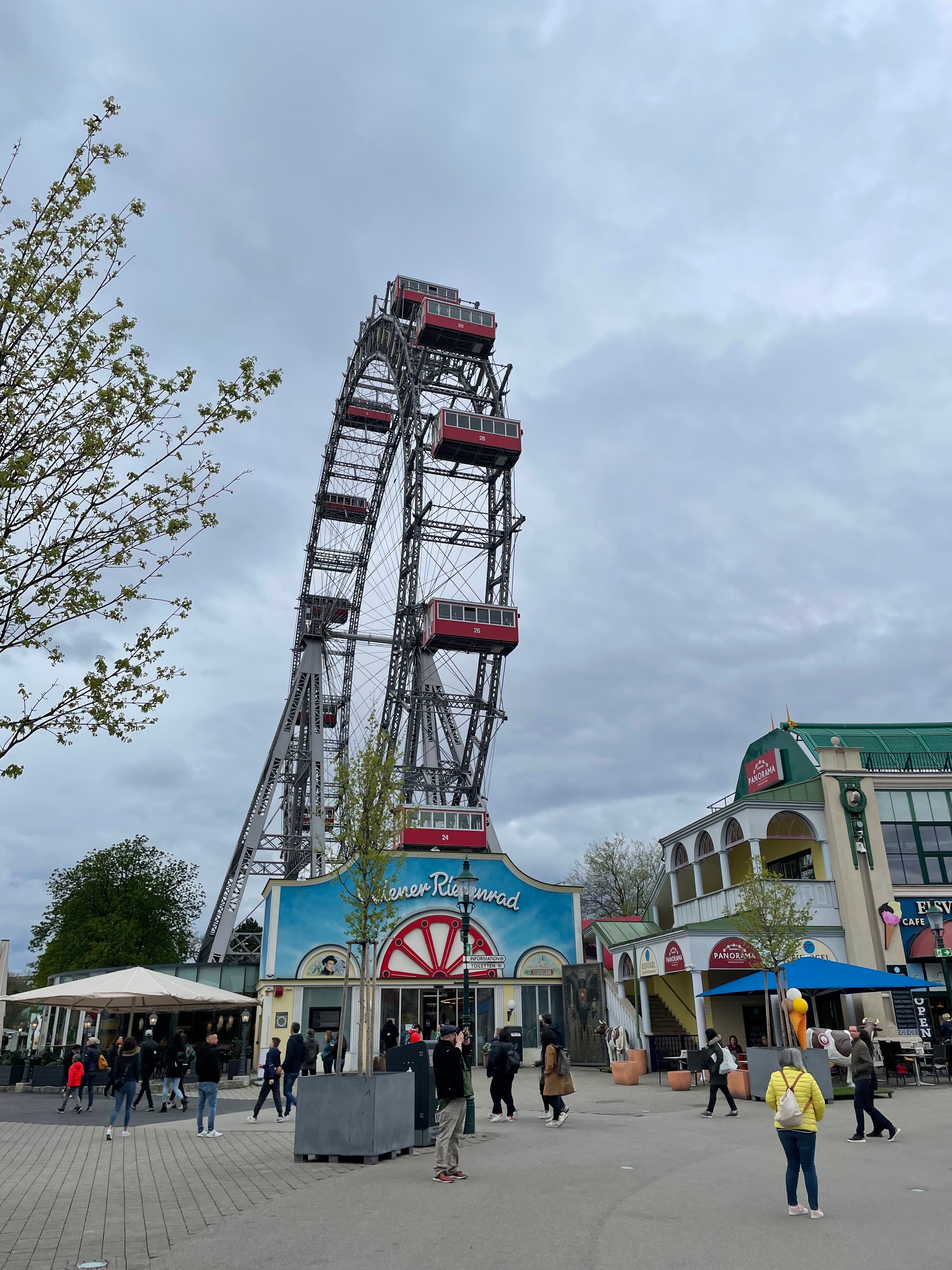
In the Museumquartier, you can find the Leopold Museum and Mumok art museum, with its striking building below. There are also museums on architecture and children’s history.
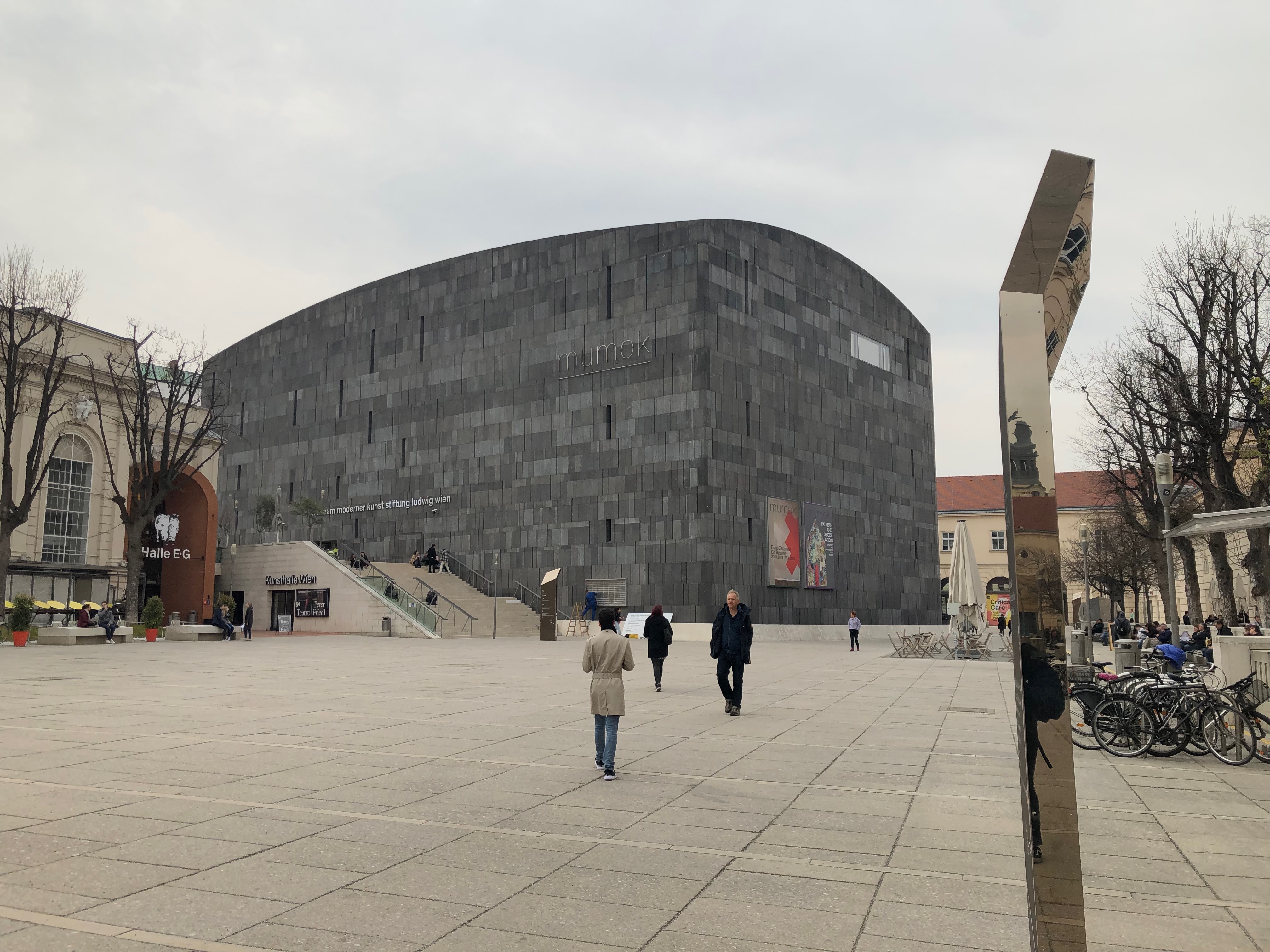
The Spanish Riding School can also be found in the historic centre. It is well worth passing by, even if just to admire the building from the outside. If you’re into horseriding, you can book onto one of the various tours and shows they offer.
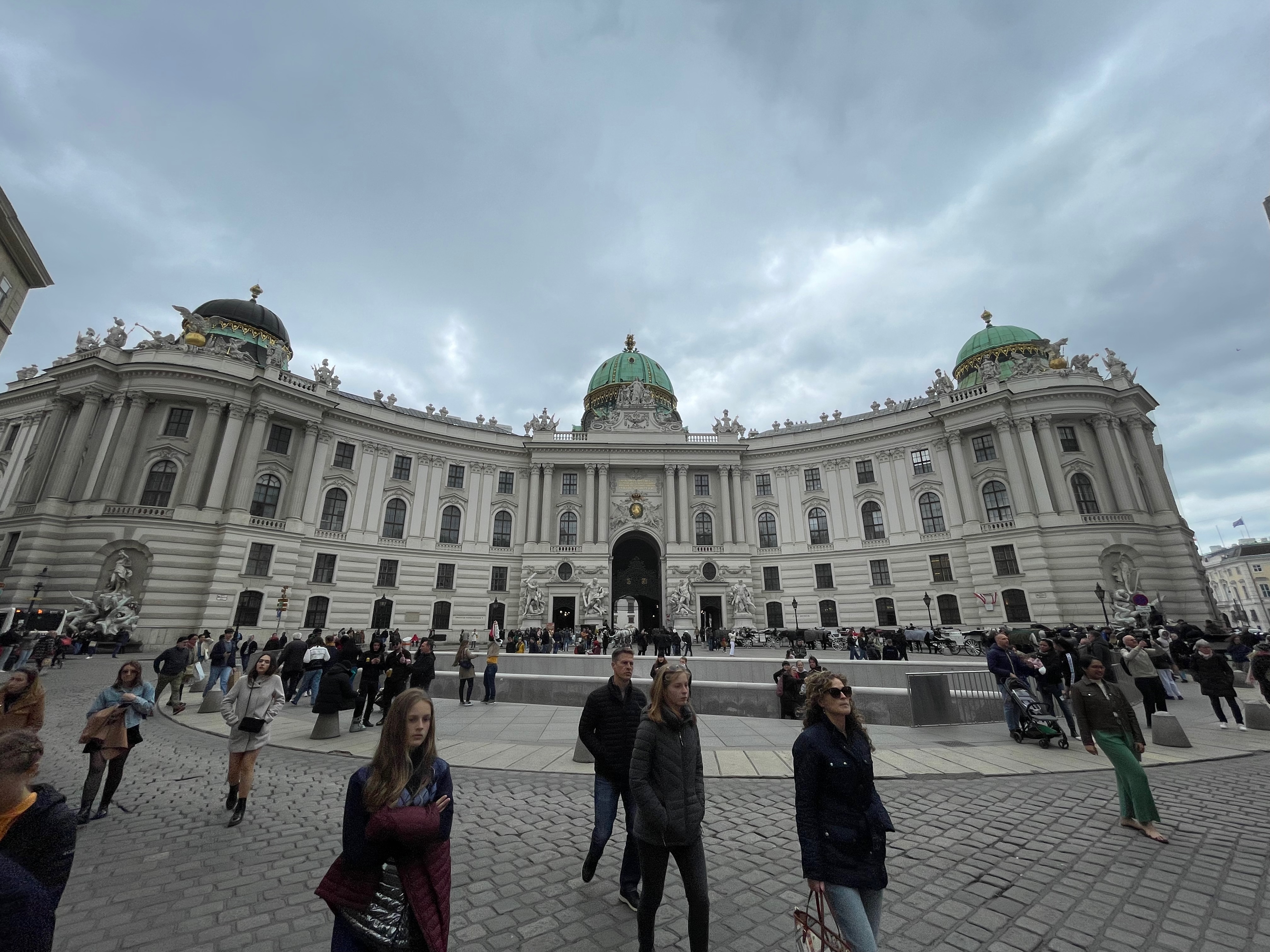
The Austrian Parliament building and Vienna City Hall are two more buildings to visit on a tour of the historic centre of Vienna. Both buildings offer guided tours on their history, architecture and modern day use.
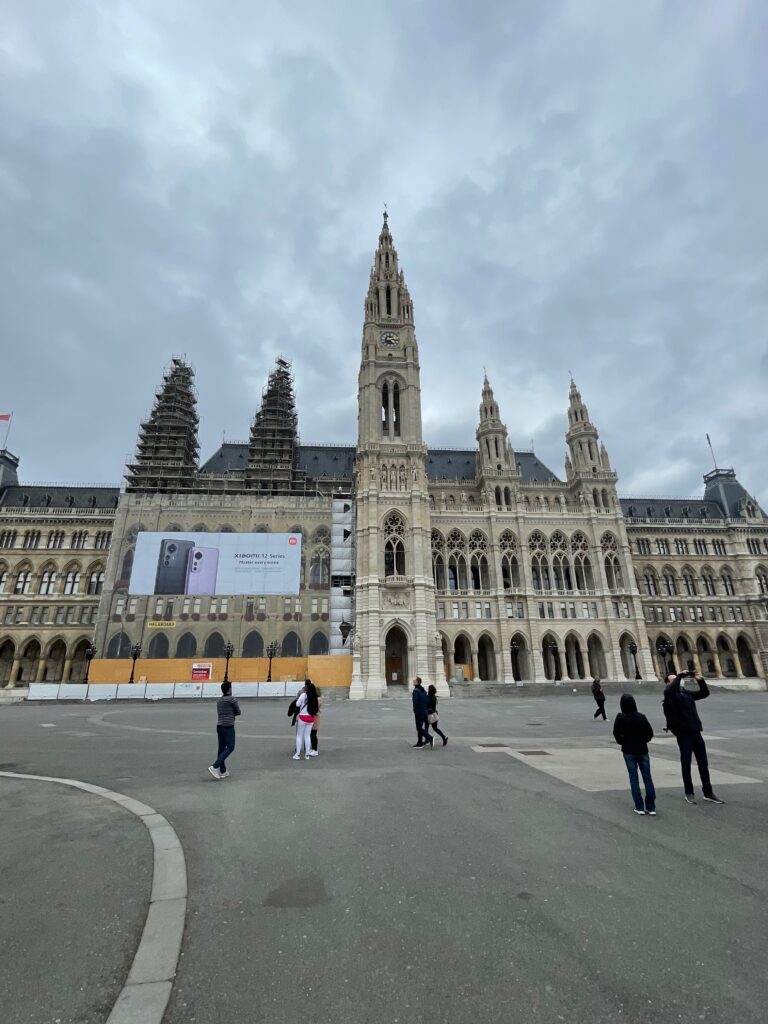
Just like the other palaces such as Schönbrunn, the Belvedere Palace is worth exploring even just to admire the building from the outside with its well kept gardens. You can go inside the Palace, with tickets available online in advance. If you are on a short visit to Vienna and had to pick one Palace to visit, I would pick Schönbrunn.
Located on the other side of the Danube, UNO City is home to several international organisations, including the United Nations Office in Vienna, which offers guided tours to visitors. The buildings are a striking contrast to the historic centre of Vienna. Keep an eye out for collections of national flags and try and spot your own!
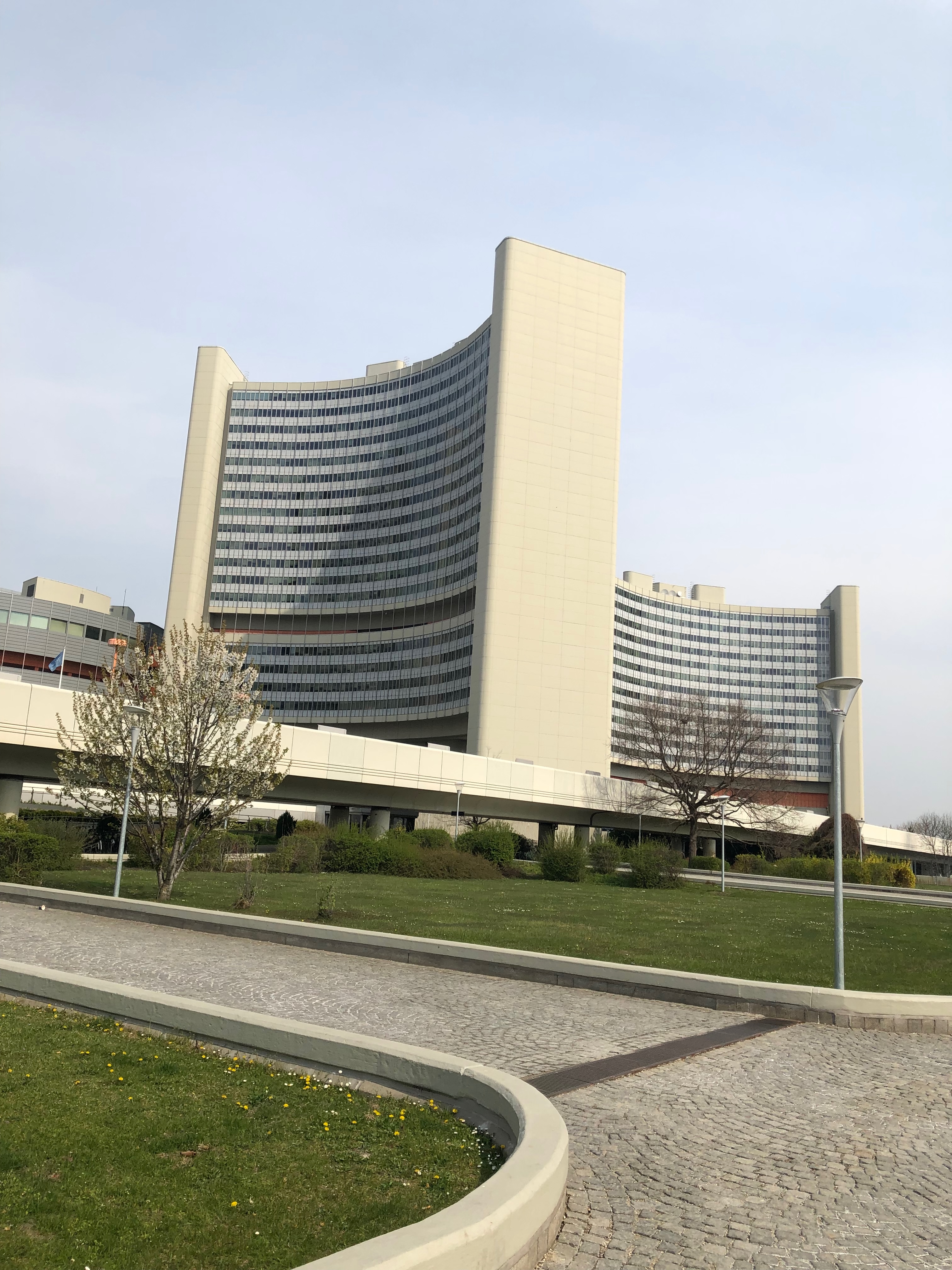
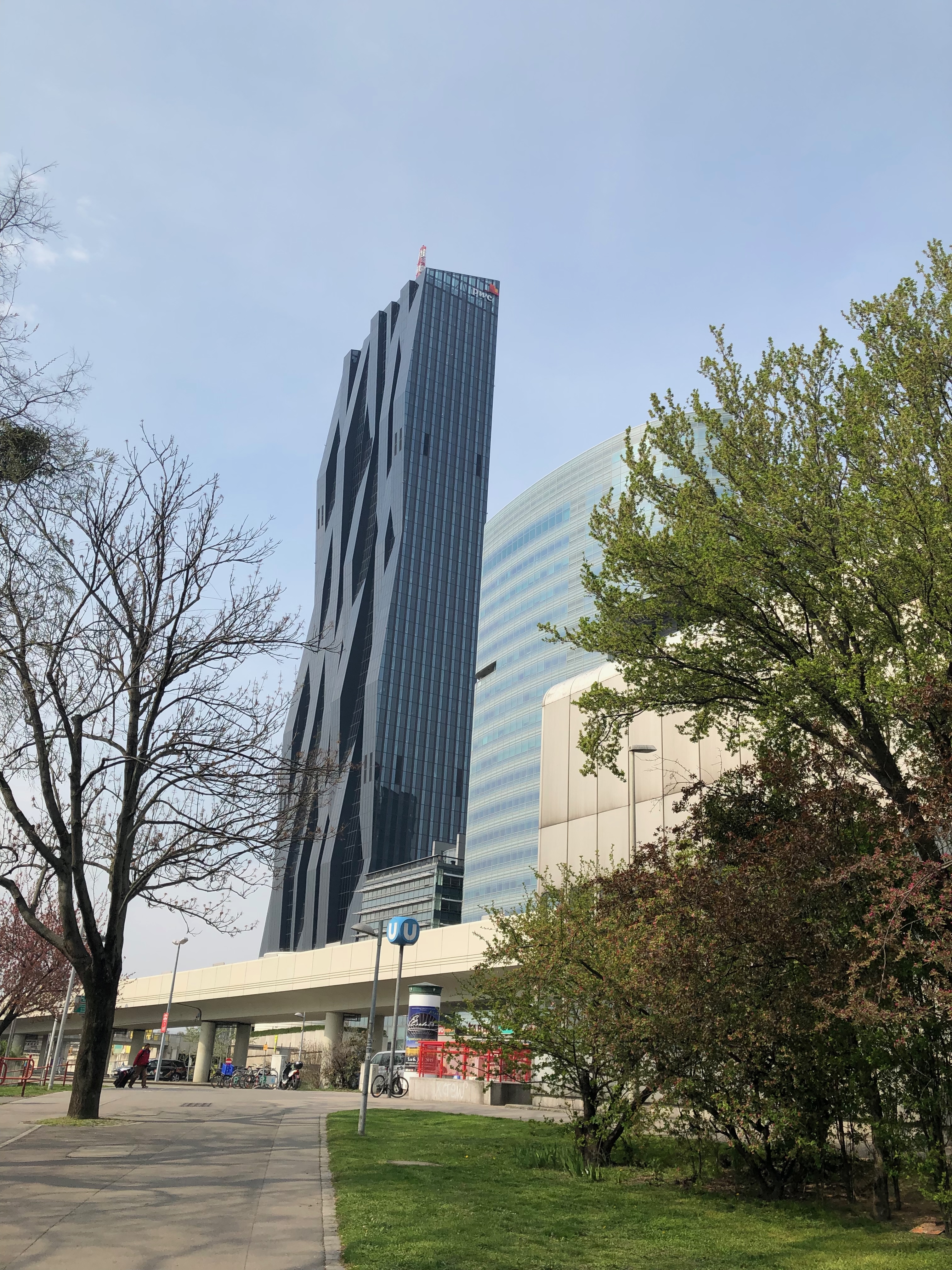
The Vienna State Opera and Albertina are located next to each other in the historic centre of Vienna. The State Opera is known across the world for its architecture and history since its opening in 1869. You can take a guided tour of the building and opera hall for 15 Euros, or of course you can visit one of the many shows hosted at the Opera, although these can be more expensive if you don’t book in advance.
Next to the Opera is the Albertina, an art museum located in an old palace with a sun terrace to sit, people watch and have a bite to eat. This can be a good spot to finish any walking tour of the historic centre, as Hotel Sacher, Demel and other famous food venues in Vienna are nearby!
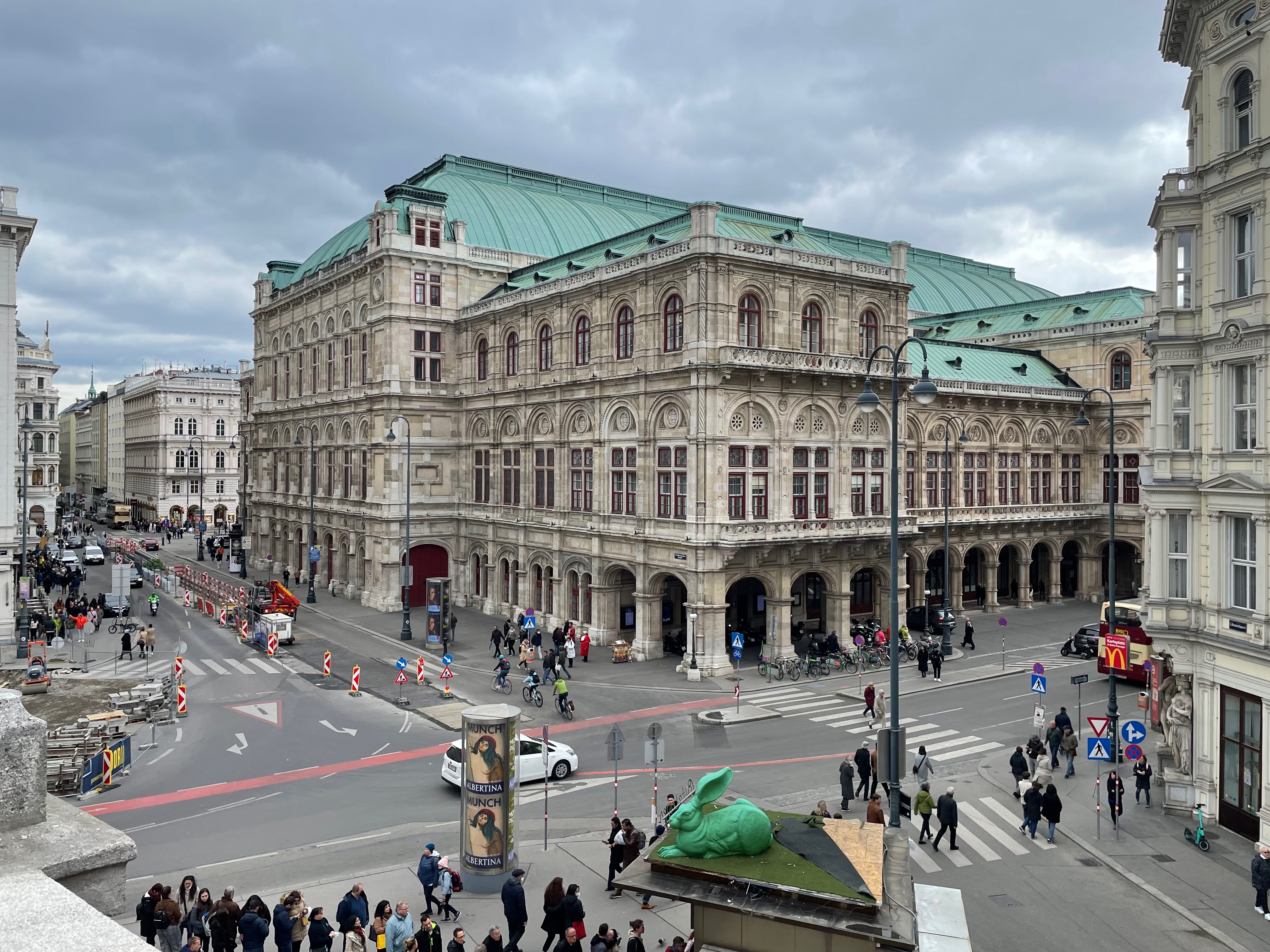
Vienna’s tourist information has a good website with all the information you will need for a trip to the city – including a selection of brochures to download in advance of your visit – you can access their website here.
Where to eat
Bitzinger Würstelstand next to the Albertina (the building with the rabbit in the photo above!) has some of the best sausages in Vienna and is a great spot for an al fresco lunch. Opened in 1999, the stand is now recognised by UNESCO as an asset of cultural heritage in Vienna. I would recommend the Käsekrainer, a cheesy sausage within a baguette with a handful of sauces – it’s great! You can get the escalator up to the Albertina where there are plenty of benches to sit around.
You cannot visit Vienna without sampling the delights of the Sachertorte, an Austrian dense chocolate cake with apricot jam. Two of the most well-known spots to try the cake with a Viennese coffee are Hotel Sacher and Demel (which I visited), although you can find the cake in most coffee shops. Demel has a viewing area, see below, where you can watch the cakes being made and you can buy them in their traditional presentation cases. I can highly recommend!

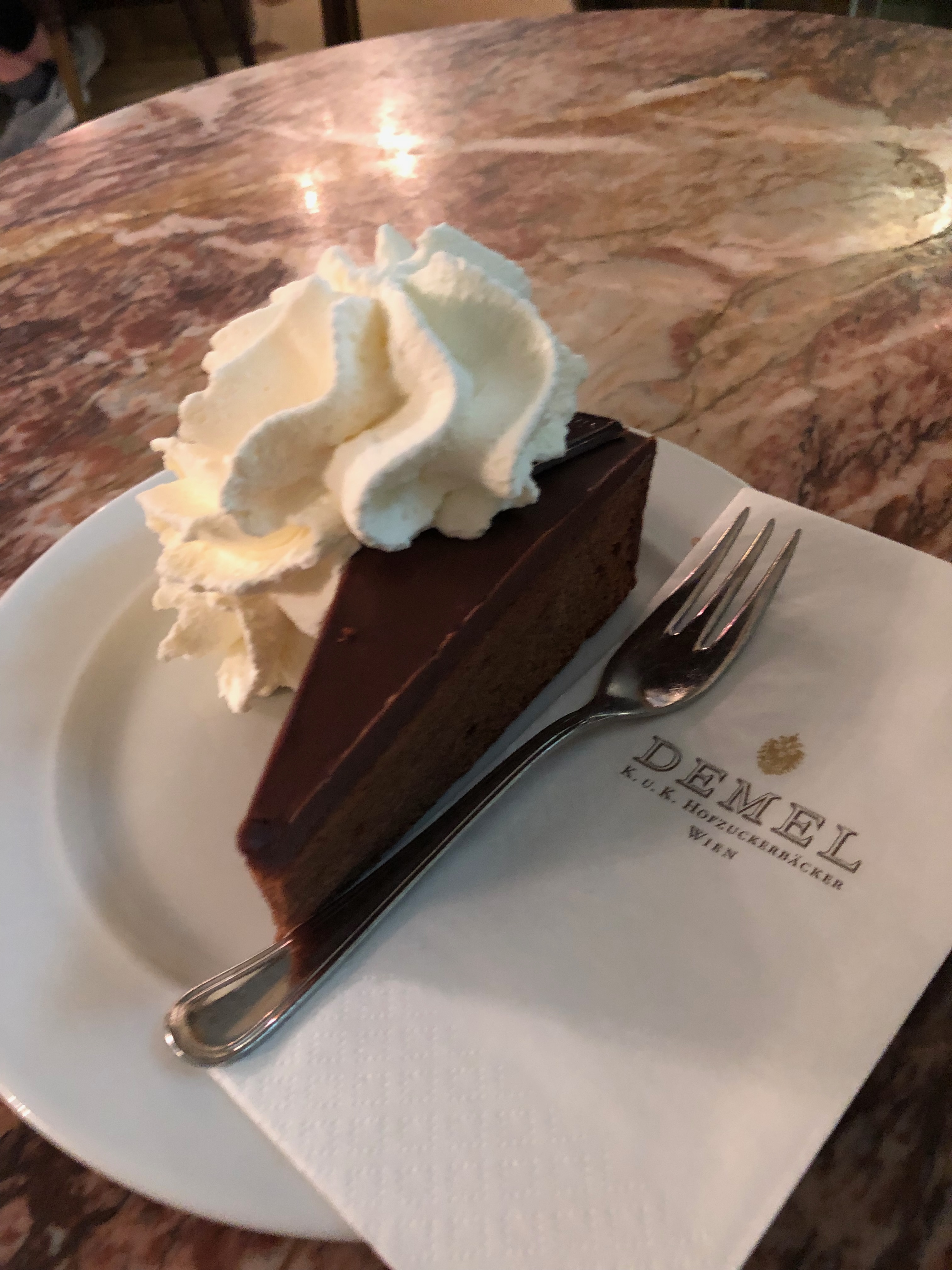

The local beer in Vienna is Ottakringer, although there are plenty of Austrian beer brands to choose from. Drinking is an important part of Austrian culture so make sure you join in during your visit!
Where to stay
We chose to stay at the Holiday Inn Vienna South located in the Meidling district of the city. Whilst it was a little way from the historic centre and main attractions, it was well connected to Vienna’s public transport. As you’d expect from an IHG property, it was up to international standards with a good breakfast assortment and spacious rooms.
There are so many different hotels of all shapes and sizes in Vienna, so there will be something to your taste!
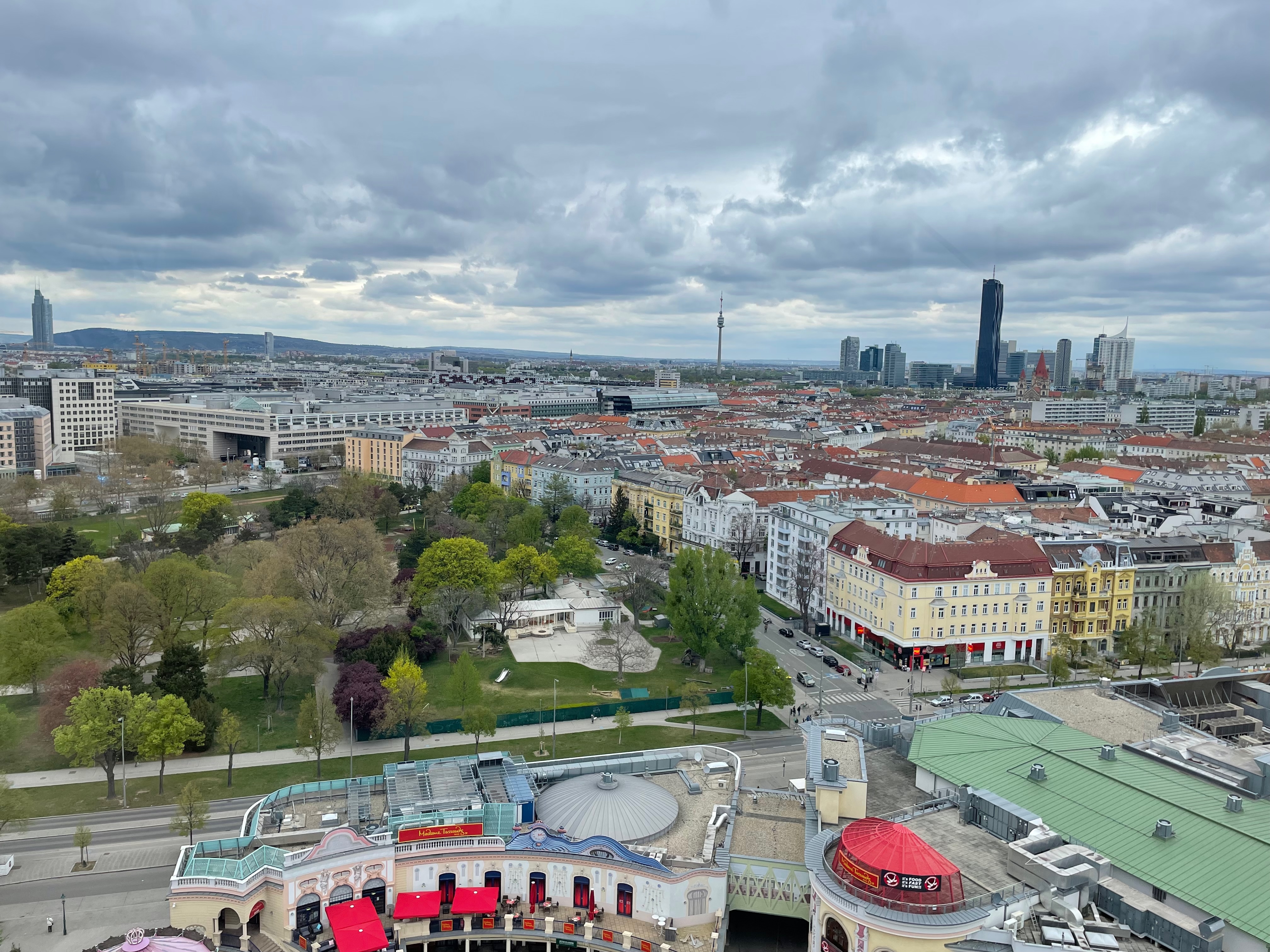
The budget
Flights from the UK to Vienna are available on Austrian Airlines, British Airways, EasyJet, Jet2, Ryanair and Wizz Air. Flights are also available to Bratislava on Ryanair and Wizz Air. Vienna is well connected to all major European cities with regular flights.
I have visited Vienna twice – once all booked separately and once as part of a package. The flights for my first visit cost £37 for the outbound to Vienna and £22 for the return from Bratislava – this was in peak season, so you can see there are some good deals out there!
If you are going for a long weekend, it is worth taking a look at package deals such as on Expedia. I paid £310 for 2 people, which included return flights with Austrian Airlines from London and 3 nights in a 4-star hotel in Vienna city centre.
Like most major European capitals, Vienna has its own City Card, providing discounts for entry to tourist attractions across the city. The card costs €17 for 24 hours, €25 for 48 hours and €29 for 72 hours, and includes public transport across the city. Details of the card can be found here.
If you are travelling from the UK or Europe, it may be worth looking at flying to Bratislava and combining your Vienna trip with a Bratislava day out. Bratislava has a good presence of budget airlines with flights across the continent. I flew into Vienna and flew back from Bratislava.
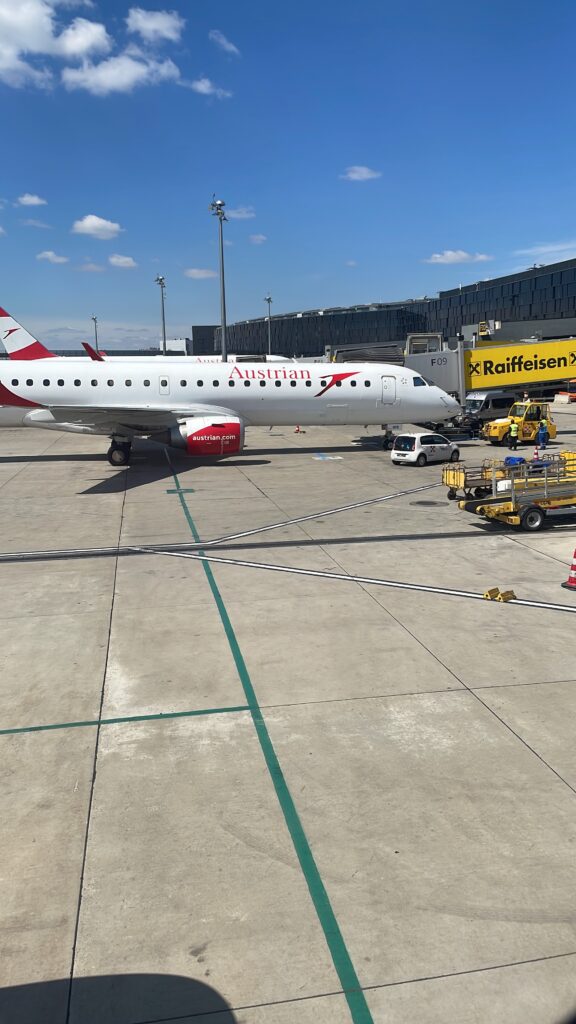
If you want to add another country to your trip, try a day trip to Bratislava in Slovakia
Vienna and Bratislava are the two closest capital cities in Europe at just 31 miles apart, so if you want to tick off another country, this is a great opportunity. Bratislava doesn’t need more than a day or two in my opinion as the city is smaller than Vienna.
The full range of attractions can be found on Visit Bratislava – here. I’d recommend climbing up to Bratislava Castle, going up the UFO Tower and walking through the historic city centre. I’ve put a few photos below to give you a taster!
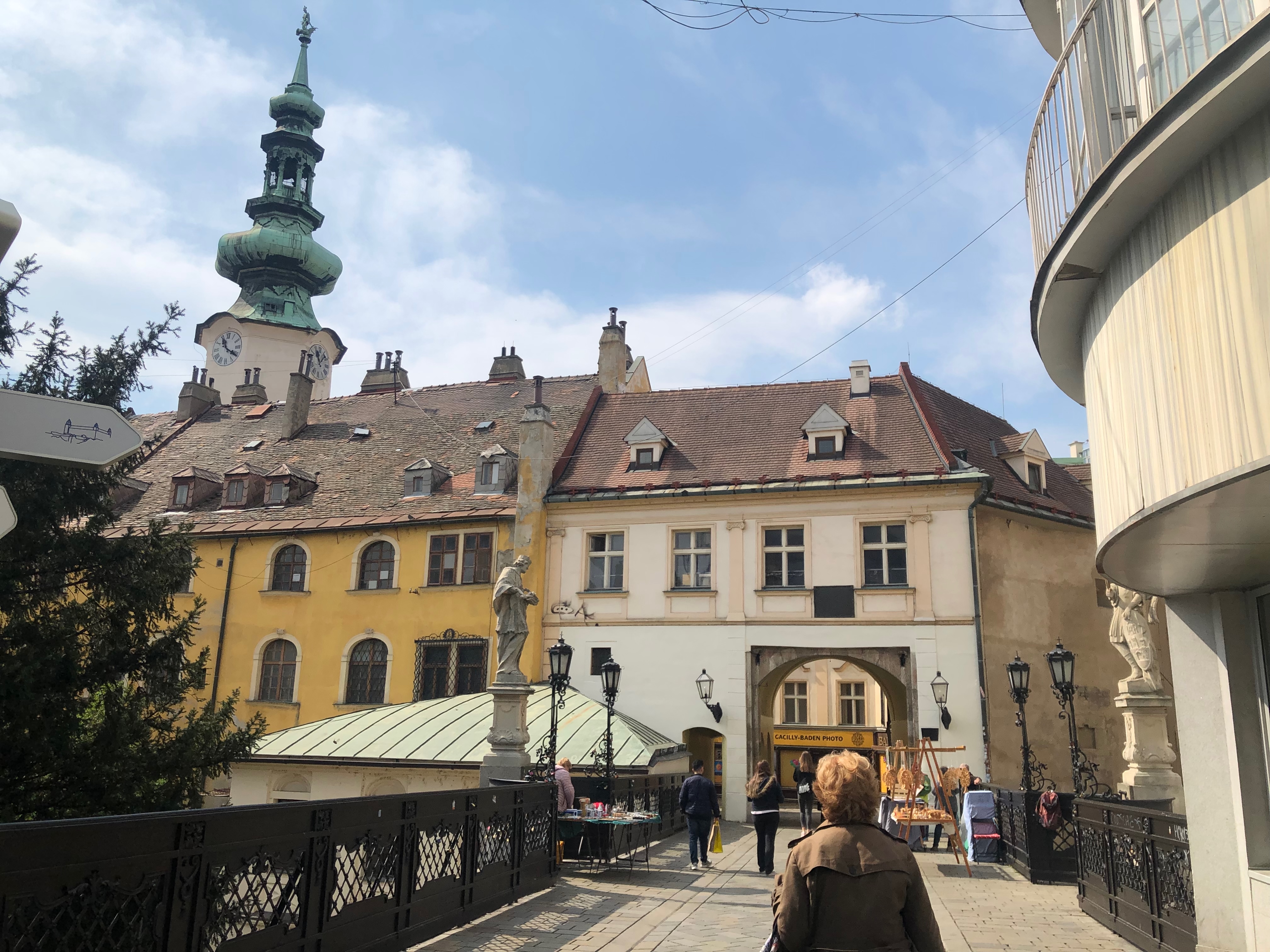

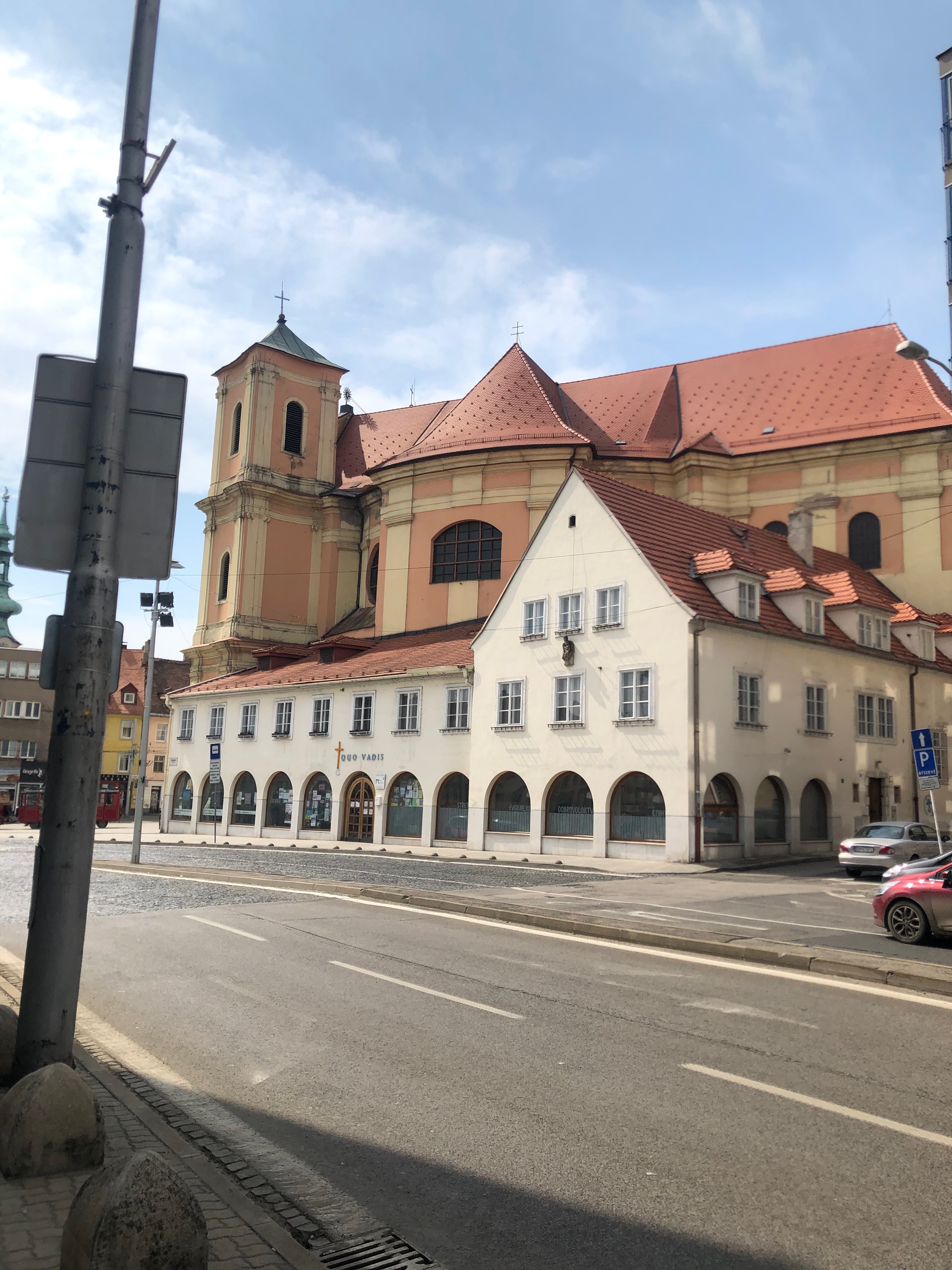
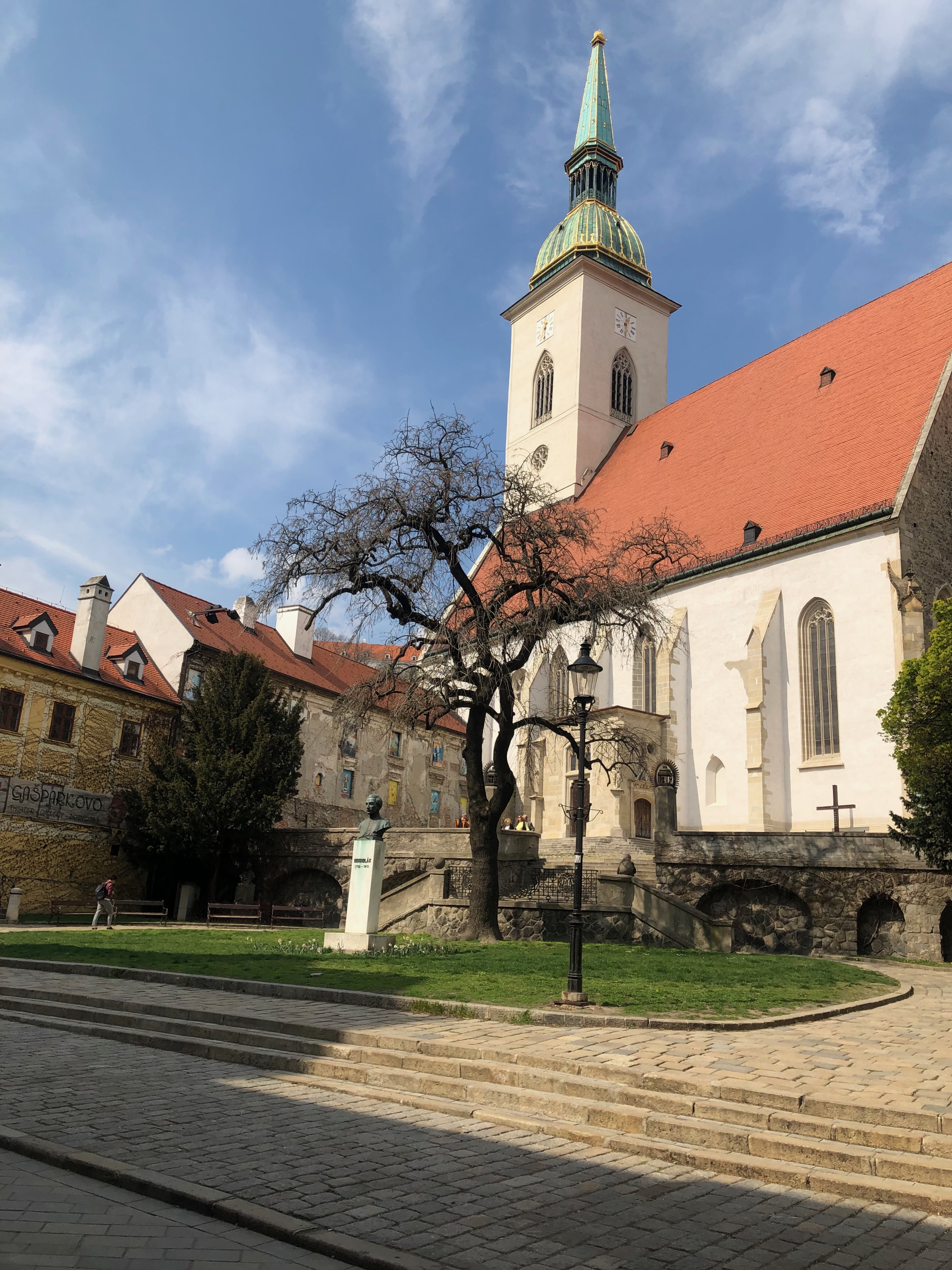

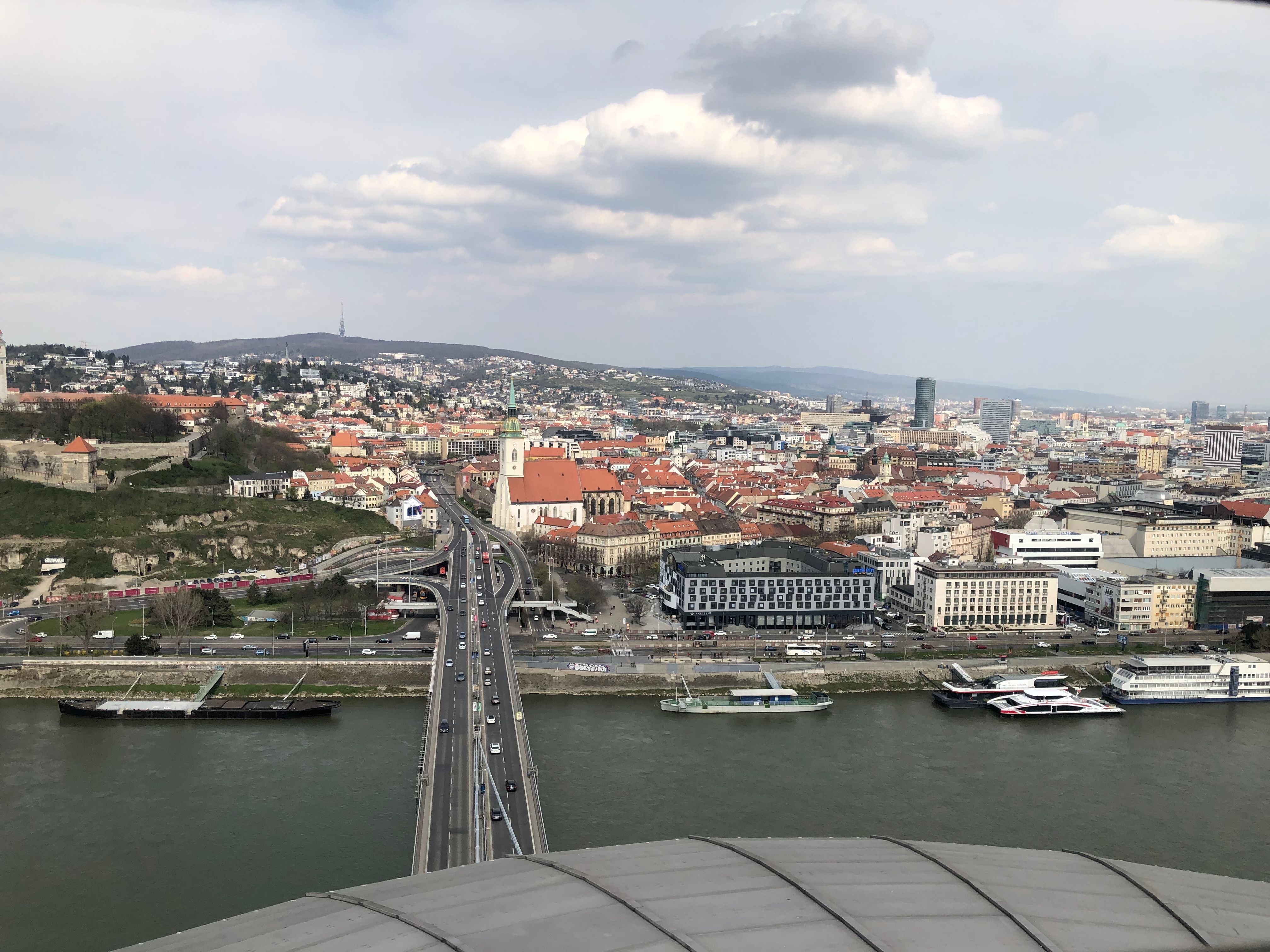
This post contains affiliate links to trusted partners. If you purchase through these links, I earn a commission at no extra cost to you. Thank you!
